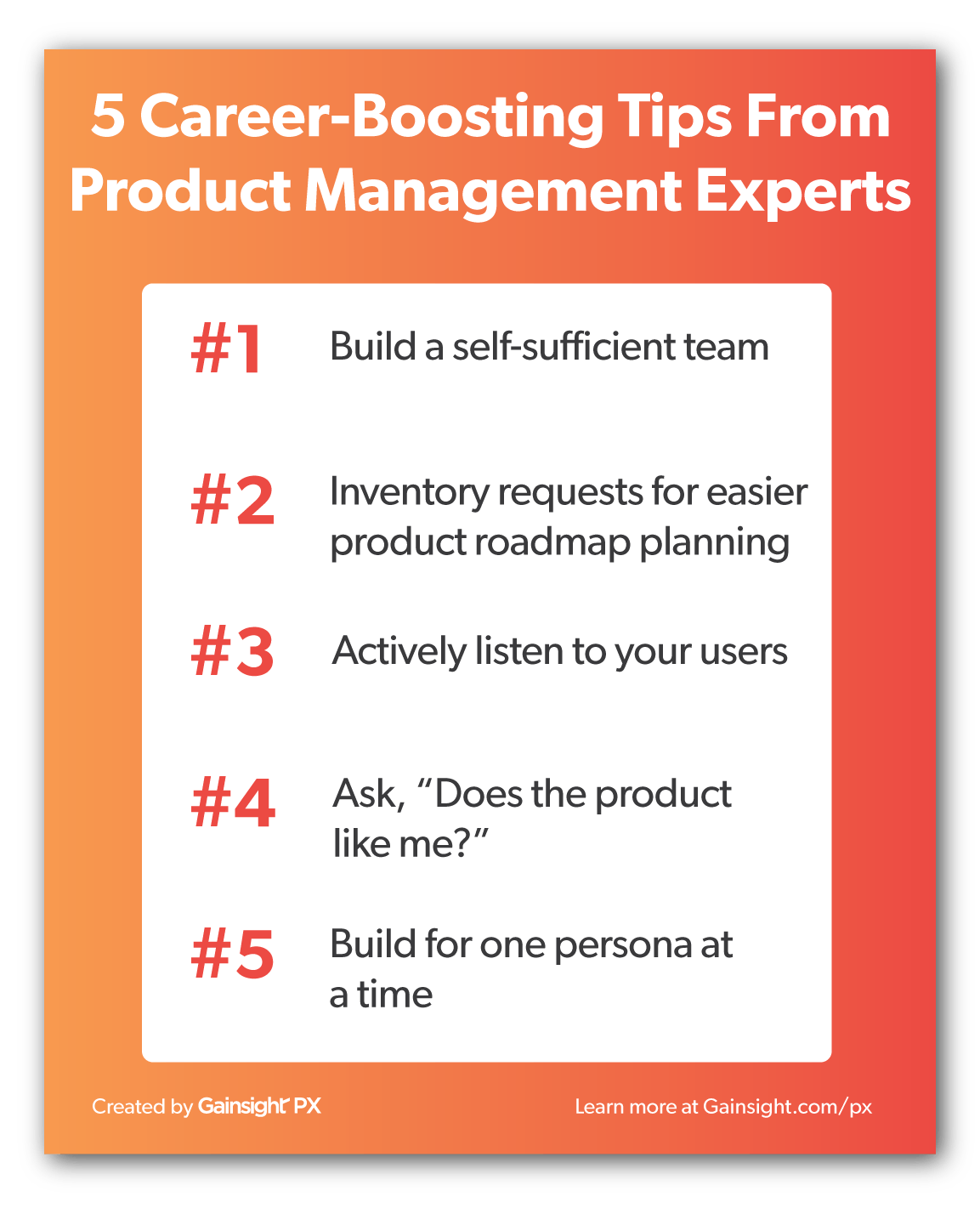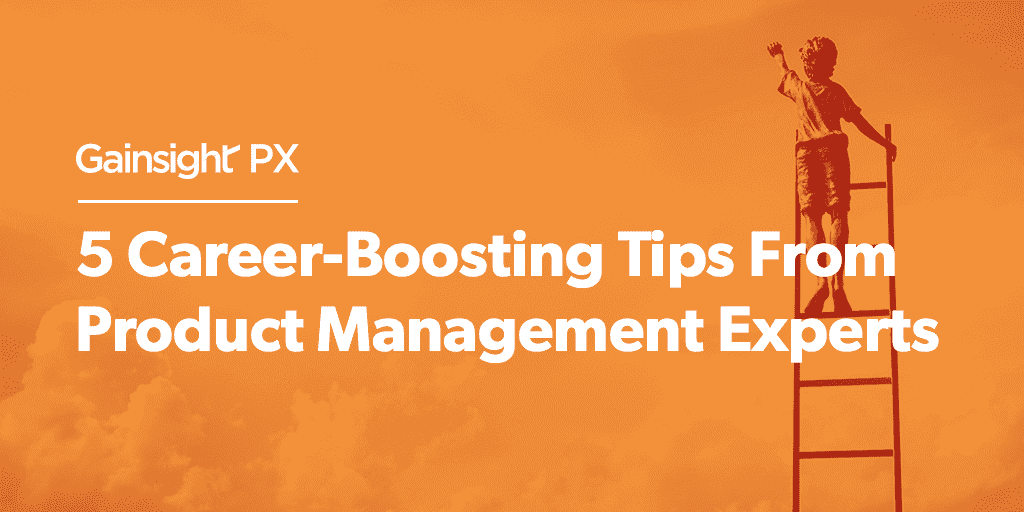We asked our Pulse 2019 speakers for the best advice they’ve ever received and we’re sharing it with you so you can take your product and career to the next level.
As part of an ever-changing industry, it’s up to all of us to share what works, what doesn’t, and what we’re still trying out. These tips are just a taste of the product experience best practices that will be shared at Pulse 2019.
What is Pulse 2019?
On May 21-24, over 5,000 growth-focused SaaS professionals will meet in San Francisco for four days of education, inspiration, and connection. Now in its 7th year, Pulse is introducing an immersive Product Management track where you’ll learn how successful product companies are cultivating customer-centric product experiences. Hear the latest best practices from leaders at Google, Slack, Engagio, and more. In between sessions and after hours, join your fellow attendees at many of our network opportunities. And don’t forget to pack your 20s-themed gear for our legendary Pulse afterparty!

Tip #1: Build a self-sufficient team
“Probably the best advice I have received was to build truly self-sufficient teams consisting of product managers, developers, designers, UX researchers, and QA and make sure to involve everyone in the customer discovery process.”
– Peter Komornik, CEO at Slido
Building a strong, capable team starts with hiring the right people, but that’s only half of it. For a team to be truly self-sufficient, they need to be enabled and trusted.
Enable your teams by including everyone in important customer discovery processes and business strategy meetings. The more your team collectively knows about how their actions impact your business and customers, the better they can deliver a holistic product experience.
Show your teams you trust them by giving them room to spread their wings and experiment. It’s easy to let idea boards get dusty while high-priority tasks get attention, so create incentives and frameworks that promote experimentation.
Catch this expert at Pulse 2019. Peter Komornik (CEO, Slido) and Jo Massie (VP of Customer Success, Slido) will share how their self-sufficient teams are closing the gap between people building the products and the people using them.
Tip #2: Inventory requests for easier product roadmap planning
Sometimes planning your product roadmap can feel like a giant game of tug-of-war. Requests are coming in from all directions and you feel yourself getting stretched further from what customers truly want.
“Product managers often have to balance competing interests among stakeholders, especially when dealing with product roadmap planning. You’ve got the product shortfalls to address from Sales and customers, the fixes that will help improve customer’s support, partners who seek to better serve their customers with improvements, etc.
When I first dealt with this as a product manager, I had a mentor that told me to inventory the requests (in addition to our own planned improvements). This way you avoid making decisions on the volume level or seniority of the requestor and instead consider the impact of each request on our customers as well as our overall product plan.”
–Lisa Singer, Senior Research Director, Product Management at SiriusDecisions
Catch this expert at Pulse 2019. What does it really mean to be a good product manager? In her session, Lisa Singer will share research findings that reveal the definitive characteristics that make a high-performing product management team.
Tip #3: Actively listen to your users
“True user empathy needs to be earned by listening to real users and seeing their struggles live. No matter how much you understand the space and the problem, your users will always surprise you if you listen carefully.”
– Peter Komornik, CEO at Slido
We’re all in agreement that user interviews are helpful and yet 86% of product managers say that they don’t spend enough time doing it. If you want to build a product customers love, you need to know how your users are actually using it—not how you think they are or want them to.
One of the tenants of a true customer-focused product teams is to incorporate customer feedback. Nothing beats the kind of learnings you get from going onsite and putting yourself in the shoes of the customer. Once you know the unique problems they’re trying to solve and the frustrations they might be experiencing, you can get to the bottom of fixing them both.
Tip #4: Ask, “Does the product like me?”
“A mentor once told me “ask yourself if the product likes you.” As silly as it sounds, people want to be liked, and if an experience is too sophisticated, or makes the user feel like they’ve made mistakes before they even get started, they could be more hesitant to return for future use. Products that like the user make them feel smart and speak to them at their level. Typically, great onboarding, personalized experiences, and encouraging copy are great places to embed this sentiment.”
– Ciara Peter, VP of Product at Gainsight
A good product will make the user feel like an expert from the very first click. Create confident users by providing:
- In-app engagements that follow the TRUSt Framework
- Ample product documentation and resources
- Opportunities to uplevel skills
- An intuitive user interface
- A consistent experience throughout the user journey
Behind the scenes, make sure you have a well-organized product hierarchy so you can distill better insights on user activity and behavior. Clean data hygiene is necessary for effective in-app engagements as well.
Catch this expert at Pulse 2019. Create confident users at scale with the best practices Ciara Peter will be sharing at Pulse 2019. Her session will teach you how to apply consumer-grade growth, engagement, design, and prioritization strategies to increase product adoption.
Tip #5: Build for one persona at a time
“Start the production of new features by focusing on only one target persona. This goes way beyond saying that your focus is “sales managers”—you need to pick only one type of company, of a certain industry, with one pain point, and one desire. Only after nailing down the product-market fit for that persona you can move to the next one. I think almost 30 years after its release, the bowling alley strategy from “Crossing the Chasm” is more relevant than ever before.”
– Guilherme Lopes, co-founder at RD Station
Hyper-focusing your production efforts on one persona can be more efficient and effective in the long run. In his book, “Crossing the Chasm,” Geoffrey Moore (Pulse 2018 speaker and author) speaks of the bowling alley strategy. The idea is that if you focus your energy on knocking down one pin, it will have a domino effect that will knock down the rest. Instead of spreading out your efforts across many personas—or pins, in this case—you focus all your energy on solving one person’s problem so it gets done right.
Catch this expert at Pulse 2019. Is product-led growth on your radar? In his session, Guilherme Lopes will share how adopting a product-led growth strategy has made the product a key component of customer acquisition and retention.
Hundreds of career-boosting tips await at Pulse 2019
Don’t take our word for it, here are some comments from some of our past Pulse attendees:
“This was my second year attending, and I walked away with just as many takeaways and action items as the first year. “
“It was my first time at a Pulse conference. I appreciated the variety of good quality speakers and topics that were all relevant to me. I think in just about every session I said to myself, yep, that’s what we’re going through.”
Catch all of the experts featured in this blog post and more at Pulse 2019.

